RICHARD HOLMES discovers it’s not only the fruit of the vines that makes Napa a popular foodie destination
It’s hard to think of a more impressive way to leave the city streets behind and head off into wine country than by driving over the iconic Golden Gate Bridge. And on a sparkling autumn morning, San Francisco’s Bay Area was showing her best face, as ferries plied the waters rushing through the famous rocky promontory that gives the bridge its name. Tourists and locals cycled and wandered across the 80-year-old span as our Trafalgar coach cruised across the gap.
Behind us were happy days of eating and exploring the foodie capital of northern California. Ahead – after a quick stop at the lookout point to admire the view – lay Sonoma County and the Napa Valley: three days of wining and dining for our happy coachload of far-flung travellers. Through the upmarket commuter suburb of Sausalito, and past the imposing walls of the infamous San Quentin Prison, the road quickly flattens out into the lush farmland of Sonoma. Just 30 minutes from Golden Gate the first vines appear, blushing red in the early days of autumn.
The vineyards of Sonoma and Napa, which lie at the northern end of San Francisco Bay, trace their roots back to Spanish missionaries who planted vines for communion wine. The oldest vines date back to the early 1800s, making South Africa’s New World offering look decidedly long in the tooth. Warm days coupled with cooling sea breezes make this corner of California home to some of the biggest names in wine: the likes of Robert Mondavi, Beringer and Beaulieu have theirvineyards here my first stop was a little more low-key.
Ravenswood is a specialist grower of zinfandel – a varietal rarely seen in South Africa – and is home to one of the oldest vines in Sonoma, a gnarled old brute dating back to 1885. Aside from a tasting above the rambling vineyards, the highlight of a visit here is a blending seminar that’s happily free of any wine snobbery.
“It’s simply all about balance and mouthfeel,” explained Peter Griffith, our wine-blending host. “You’ve got zinfandel for fruit, carignan for acidity, and syrah for tannin.” Later, with a half-bottle of our own blend in hand, we headed for lunch in the quaint town of Sonoma. One of the first ‘Slow Food’ cities in the USA, a handful of eateries line the central square – from casual barbecue joints to more upmarket offerings – but the El Dorado kitchen is where our group ended up. The modern decor is reflected on the menu of upmarket bistro food with a touch of Californian influence. Generous salads, piping-hot flatbreads and bowls of risotto fly out of the kitchen, alongside wood-fired pizza topped with spicy short rib and caramelised onions.
We’re running late, so I swop dessert for a wander through town. Across the leafy park and past the tasting rooms of local estates: Adobe Road Winery, Charles Creek Vineyards… unfamiliar names offering unusual wines. Boutiques, barbecues and bistros fill the gaps between the tasting rooms, giving Sonoma that pleasantly sleepy familiarity common to winelands towns from the Rhine to the Swartland.
Clambering back on the bus – another benefit of a guided holiday is that your designated driver is always taken care of – we aren’t given much respite before a tasting stop at Domaine Carneros. The Taittinger family own this grand chateau and winery, so it’s no surprise that sparkling wine made in the Champagne style is the flagship of this manicured estate. Once a cattle and sheep farm, the lands have been planted over with pinot noir and chardonnay, and with marbled floors and a bustling tasting room it’s easily one of the most glamorous wineries in the Valley. The town of Napa is short on glamour, so the next morning we don’t linger before heading north on Highway 29. Soon, the leafy streets of Rutherford signal our first stop as the vineyards race away in all directions. It’s the ‘Rutherford dust’ soil that gives Napa cabernet its trademark flavour profile, and this unassuming town is the vinous heart of the Valley. But it’s not only the fruit of the vines that make Napa a popular foodie destination. Round Pond Winery produces exceptional nebbiolo and sauvignon blanc, but over the past eight years has become equally famous for its olive oil.
It was back in 2005 that the estate built its own olive mill – the first in the Valley – and now covers 16 hectares with more than 2 000 trees. “We have five Italian and three Spanish varietals,” explained our guide Kelly, as the press was readied for the first crush of the season. “The Italian varietals are picked younger and put through a hammer mill for a more Tuscan style of oil, with lots of grassy notes. The Spanish are picked later and stoneground, producing a mellow, buttery oil.”
After a tasting at the stylish Estanciastyle winery – fine stemware and wraparound views come standard – it was time to eat again. St Helena is the Franschhoek to Sonoma’s Stellenbosch, switching cosy shops for upmarket boutiques. It’s a genteel sort of place where you might want to dress for lunch on the main drag… except at Gott’s Roadside, that is. One of the most famous diners in the Valley, smoke from the grill billows over the lines of white benches where in-theknow travellers tuck into Gott’s famous cheeseburgers.
We had something a little more memorable in store though, as our Trafalgar guide JP led us to an unassuming side door a block back from the main road. ‘Cindy’s Backstreet Kitchen’ was the only clue to where we were headed, but my American travelling companions were already giddy with excitement. Cindy Pawlcyn – chef, author and television personality – is a household name stateside, and is famous throughout Napa where she has three eateries. Widely regarded as a pioneer of winelands cuisine in California, Cindy is Napa’s loudest supporter of farmto-table dining, and in the case of her Backstreet Kitchen that ‘farm’ is often the expansive vegetable garden outside her St Helena home.
Combining classical training and home-cooked comfort, the menu is a happy mix of pan-American bistro fare: duck and sausage gumbo, a grilled hangar steak with yams and chimichurri, finished off with a decadent all-American choc-nut sundae. There’s not a foam or reduction in sight here and, judging by the bustling tables, it has no shortage of fans. After a wander through town, a turn through the yeasty wonderland of The Model Bakery and some souvenir shopping at the St Helena Olive Oil Company, our time in northern Napa was almost up. That night, a cooking class awaited, followed by a lazy drive back to San Francisco. Back through the zinfandel vineyards of Sonoma, past the bayside mansions of Sausalito and one last glimpse of the Golden Gate Bridge. In the distance, the docks of Oakland that inspired Otis Redding are washed by the tide rollin’ in and out of the bay. I have a long flight home ahead of me, but I could certainly spend a lot more time exploring this corner of northern California.
San Francisco’s foodie highlights
Before you head off to explore Napa…
FERRY PLAZA FARMERS’ MARKET
The city’s historic Ferry Plaza has a new lease on life as a gourmet market filled with bakers, butchers and restaurants. Saturday morning is the best time to visit, when farmers set up shop. Trafalgar tours partner with Edible Excursions to offer guided tours of the market. www.cuesa.org
B RESTAURANT
Chef Kevin Best takes the farm-totable ethos seriously at his midtown eatery overlooking Yerba Buena Gardens. Modern Californian cooking using exclusively local products make this a must-eat. www.bsanfrancisco.com
CHINATOWN
The largest Chinatown in North America dates back to the Californian gold rush of the mid-1800s and is filled with foodie destinations. Tommy Toys is a good choice for upmarket Asian fine dining. www.tommystoys.co.za
THE STINKING ROSE
A restaurant in Little Italy where every dish has garlic in it! Beware of the 40-clove roast chicken! thestinkingrose.com
TRAVEL TIPS
Richard travelled on Trafalgar’s San Francisco and Wine Country Delights tour, an eight-day itinerary combining prearranged city and winelands experiences, along with plenty of free time to explore on your own. Visit www.trafalgar.com/
sa or contact your local travel agent.
GETTING THERE: Virgin Atlantic offers daily flights from South Africa to San Francisco via London Heathrow. www.virgin-atlantic.com
VISAS: South African passport holders require a visa to visit the United States. za.usembassy.gov
MONEY & COSTS: The tour package includes all hotel accommodation, transfers, coach transport and the services of a travel director, a range of activities and tours, and most meals.

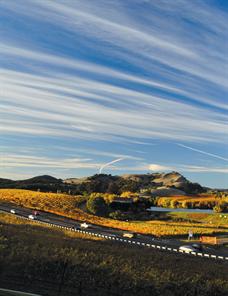
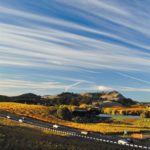
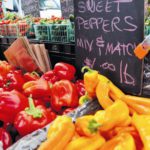
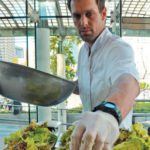
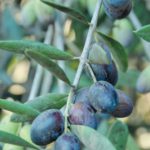
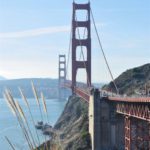
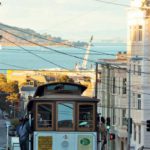
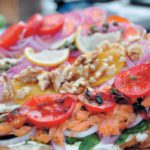
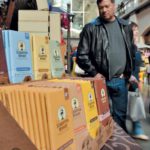
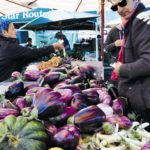
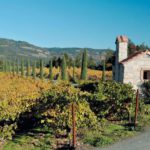
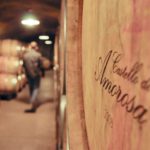
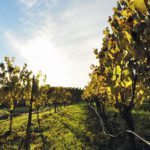



![Chef Hugo Uys’ 5 Best [of New York] Chef Hugo Uys’ 5 Best [of New York]](https://www.foodandhome.co.za/app/uploads/2018/09/Chef-Hugo-Uys-5-Best-150x150.jpg)


